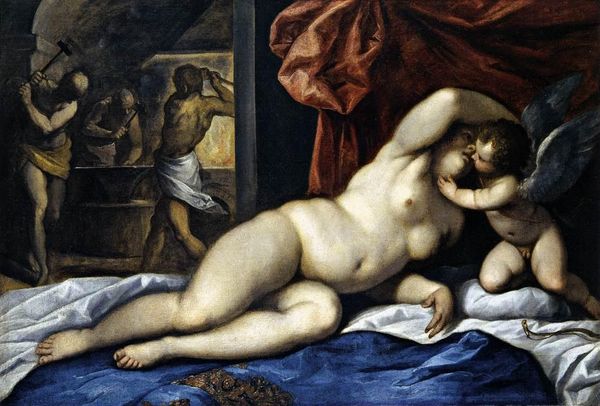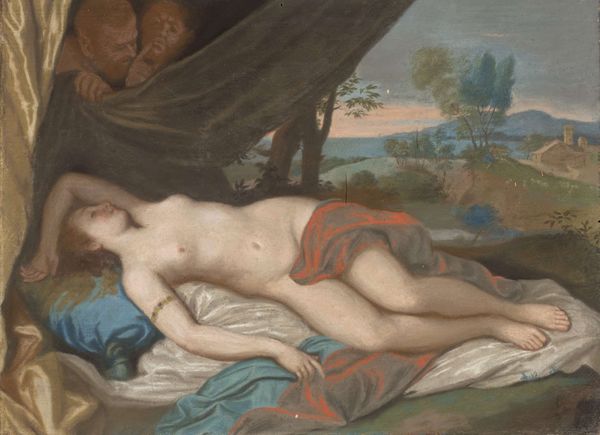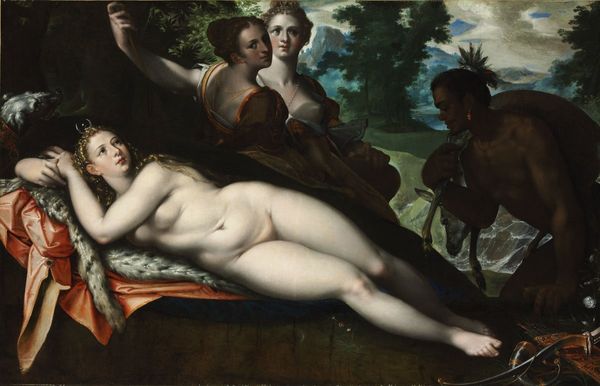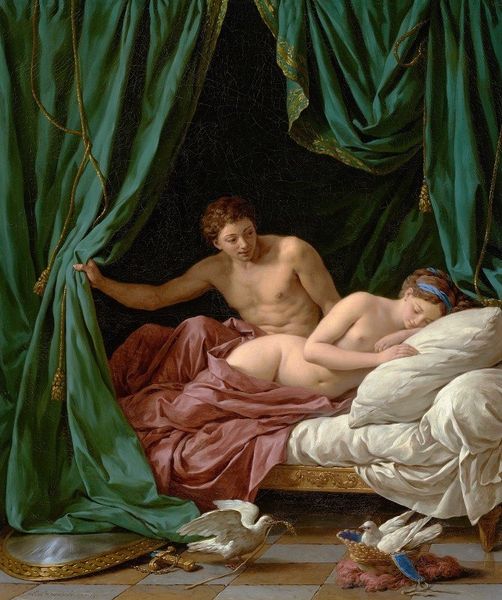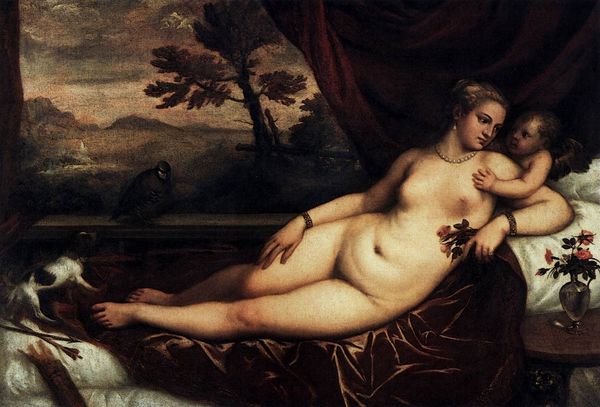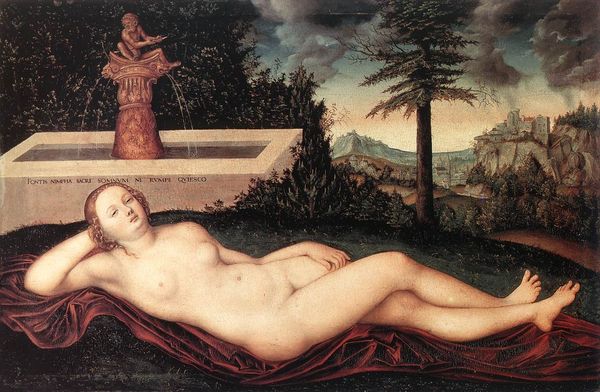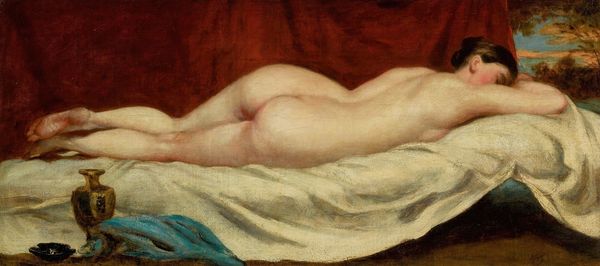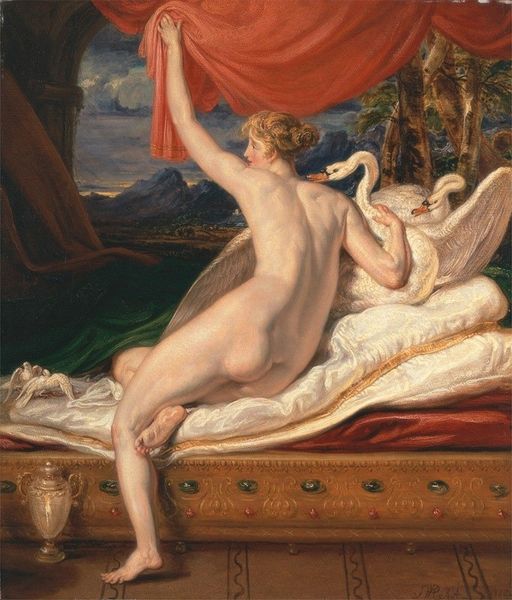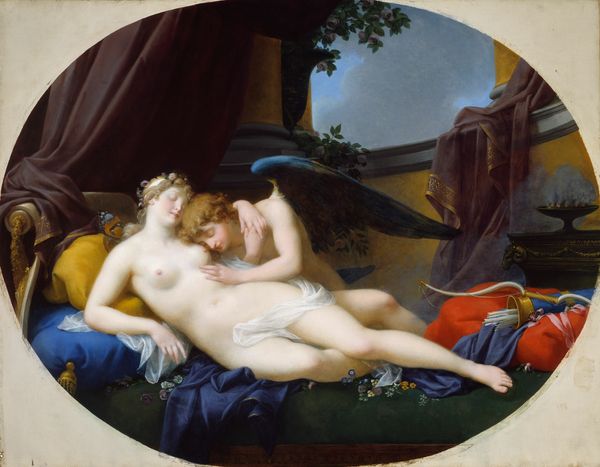
oil-paint
#
portrait
#
baroque
#
oil-paint
#
figuration
#
oil painting
#
mythology
#
lady
#
nude
#
portrait art
#
fine art portrait
Copyright: Public domain
Curator: Artemisia Gentileschi's "Sleeping Venus," painted around 1630, presents a fascinating, even audacious take on a classical subject. I’m immediately drawn to the intimacy, the unusual, vulnerable repose of the goddess. What’s your take, from a more formal perspective? Editor: Well, the dramatic use of light and shadow, the tenebrism, immediately strikes me. The rich reds of the drapery contrasting with the cool blues of the bed linens certainly emphasize Venus' pale skin, directing the viewer's gaze. It's a masterful, though somewhat unsettling, arrangement of color and tone. Curator: Indeed. Consider the traditional representations of Venus, often idealized and aloof. Here, Gentileschi gives us a woman asleep, unaware, perhaps even burdened, by her own beauty. The figure of Cupid hovering near her head feels less like the god of love and more like an attendant, burdened, perhaps even resentful. The iconography is flipped; there's a weight, not a flightiness to the composition. Editor: That’s an interesting interpretation. I was more focused on the painting's materiality; look at the texture created by Gentileschi's brushstrokes! The way she renders the velvet cushion versus the smooth skin of Venus – it’s all so tactile. It invites you to engage with the surface, even if the subject is in repose. There's a calculated, almost mathematical precision in rendering those contrasting textures to invoke depth. Curator: I see it as Gentileschi actively subverting patriarchal narratives by reimagining mythology to reflect the female experience. Consider how powerful Venus has been for millennia. Then, compare her with other pieces made by this artist and you get to understand the continuity, the power this female creator brings. The choice to paint Venus asleep is a political, conscious one! Editor: While I acknowledge the historical context and that subversion might have been part of her goal, I appreciate it is more on her manipulation of space and light—those techniques are very effective and worth focusing on for understanding this baroque piece, whatever interpretation is more faithful to Artemisia's desires. Curator: Yes, the mastery of the painter’s execution should not be disregarded! Understanding both things allows us to embrace the past as a source of renewal in contemporary contexts, even centuries later. Editor: Absolutely. Ultimately, I'm always brought back to that brilliant blue and those tactile textures.
Comments
No comments
Be the first to comment and join the conversation on the ultimate creative platform.
